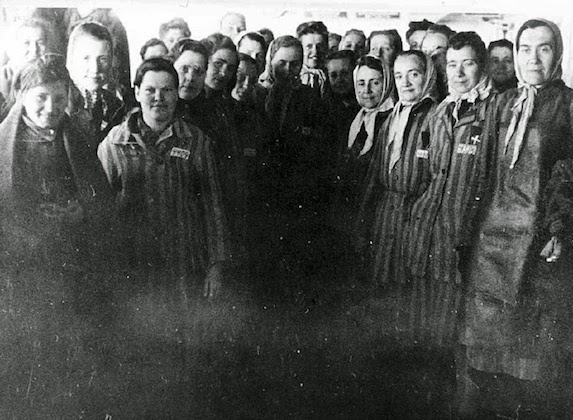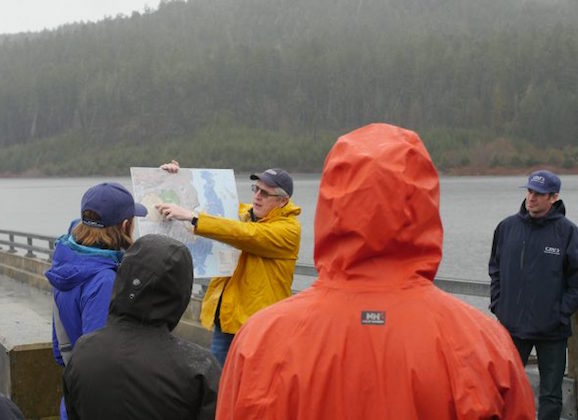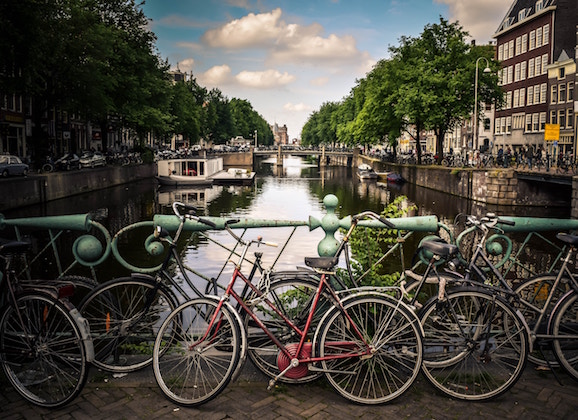Her-Story, not History: I-Witness Field School
Guest post series: I-Witness Field School
 The I-Witness Holocaust field school (GMST 489) explores the ways in which the Holocaust is memorialized in Central Europe.
The I-Witness Holocaust field school (GMST 489) explores the ways in which the Holocaust is memorialized in Central Europe.
- Learn more about the course and instructor: Field school a chance for students to witness Holocaust legacy.
- Follow the field school on Twitter.
- Read the field school blog.
Her-Story, not History
Guest post by Taylor Youngblood
When I was 9 years old I read Anne Frank’s diary, and from that moment on I became interested in the history of the Holocaust.
I think Anne’s story in particular resonated with me because it was the story of a girl around the same age as me at that time, and I could connect her story into my own life.
Today is Friday May 13th and here I sit on the bus headed to the Ravensbruck memorial with Anne’s story stuck in my head. The memorial is on the grounds of the former concentration camp of Ravensbruck. What sets Ravensbruck apart from other camps is that it was the largest all-female camp.
Ravensbruck is located in a secluded area 90 km outside of Berlin, separated from the town of Furestenberg by a beautiful lake. As we got off the bus we were greeted by our tour guide, Mattias. As we walked behind Mattias he showed us around different parts of the memorial, such as the former female guards’ houses, the prisoner compound, the crematorium, and many other areas of the former camp.
What was really special about Mattias as a tour guide was his ability to incorporate survivors’ stories alongside each location within the former camp. He was a great example of what we should be doing in our education system, incorporating personal stories alongside the history of the Holocaust.
An example of this is when he took us to the area where the women would go for roll call every morning. As we stood in the same area these courageous women once stood, Mattias told us a story about a survivor named Anika, and the story of her last roll call before being liberated.
Anika recalled watching the young Swedish bus drivers walk through the gate to liberate the women. She remembers her hand lifting up to brush her hair behind her ear; she explained that this was her reaction to seeing the young men enter the camp.
Anika said that this reaction reminded her that she was human and that she was a woman. Hearing Anika’s story made me feel the same way as I did when reading Anne’s diary. I felt a connection to these women. Although I have never met them, I could relate to their experience as women.
As I sat on the bus and did some reflecting, I remembered Anna Warda and Anne Thomas on Wednesday telling us why they felt the stumbling stone project was so effective. They said that the fact that people are able to personalize these stones was what made it effective. It gives people the opportunity to connect when they see some one who died at a similar time in their life, and it becomes real that this can happen to anyone.
I left Ravensbruck with that same feeling. Mattias was able to incorporate these women’s stories, helping me to connect to the past on an even deeper level. Even though I will never have to endure the atrocities that these women were put through, and am so thankful for that, I am still able to connect to them whether it be through my age, gender, nationality, interests, etc.
Being able to connect to the past gives us a deeper desire to find out more. I think memorials like Ravensbruck and the stumbling stone project are so effective because they allow people to personalize the memorialization process and connect to the past. This connection then makes our desire to know more grow further.
It was because of my nine-year-old self feeling a connection to Anne that I developed an interest in the Holocaust, and if it wasn’t for that I wouldn’t be on this journey.







